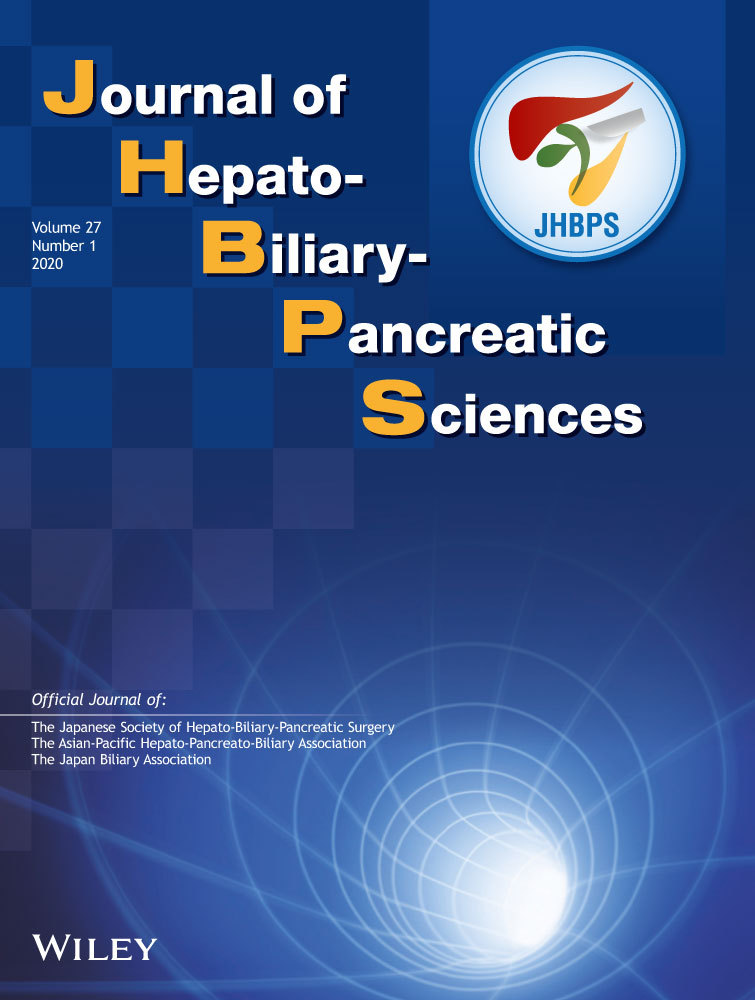Feasibility of total laparoscopic living donor right hepatectomy compared with open surgery: comprehensive review of 100 cases of the initial stage
Abstract
Background
This study analyzed the feasibility of laparoscopic living donor hepatectomy compared to open surgery.
Methods
Donors who underwent living donor right from May 2013 to October 2017 were included. Comparisons between laparoscopy and open surgery were performed using Student's t-test, Mann–Whitney test, χ2 test, Fisher's exact test, and linear-by-linear association.
Results
Among 305 donors, 100 and 205 underwent laparoscopy and open surgery, respectively. The laparoscopy group had more type I (95.0%) bile ducts than the open group (59.5%, P < 0.001) and had longer operation time (378.2 ± 93.5 min vs. 329.1 ± 68.0 min, P < 0.001), while estimated blood loss was smaller (298.3 ± 162.9 ml vs. 344.3 ± 149.9 ml, P = 0.015). Although Clavien-Dindo grade IIIb complication was higher in the laparoscopy (n = 4, 4.0%) compared to the open group (0.0%, P = 0.011), it was only significant in the initial 25 cases (8.0%, P = 0.011), and became comparable afterwards. Furthermore, grade IIIb complication was comparable when type I bile duct donors were selected (P = 0.072).
Conclusions
Laparoscopic living donor hepatectomy can cause significant complication in the initial stage. Therefore, careful donor selection and well-established training program are required for introducing the laparoscopic donor program.
Conflict of interest
None declared.




